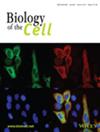Chromosome Segregation in Closed Mitosis Under an Excess of Nuclear Envelope
Abstract
Background
Two major types of cell division occur in eukaryotic cells regarding the dismantlement or not of the nuclear envelope (NE) in mitosis, open and closed mitosis, respectively. In the budding yeast Saccharomyces cerevisiae, the prototypical model for closed mitosis, the Nem1-Spo7 phosphatase complex, which regulates lipid metabolism, plays a key role in coordinating NE expansion throughout the cell cycle. Indeed, Nem1 depletion leads to abnormal NE evaginations in interphase, which protrude the ribosomal DNA (rDNA) and the nucleolus. However, the specific impact of these NE and chromosome organization abnormalities during chromosome segregation in anaphase remains poorly understood.
Results
Our study investigated chromosome segregation and NE dynamics during closed mitosis in relation to the presence or absence of Nem1. Nem1 was depleted by means of the auxin degron system. Nem1 depletion led to the formation of chromatin protrusions in interphase, particularly at the rDNA locus, as it has been reported before for nem1 mutants. These protrusions persisted into anaphase and were associated with delayed recoiling of the rDNA-bearing chromosome XII right arm, resulting in lagging chromatin during late anaphase. Additionally, cells can maintain nucleus-vacuole junctions (NVJs) during anaphase, suggesting that vacuoles may play a role in shaping NE morphology during chromosome segregation.
Conclusion
Our findings suggest that the Nem1-Spo7/lipin regulation of the NE size is crucial for the timely segregation of the rDNA-bearing chromosome during closed mitosis. Thus, the NE homeostasis actively contributes to chromosome segregation and the spatial organization of chromosomes in subsequent cell cycles. In addition, the persistent association between the NE and vacuoles in anaphase further underscores how cumbersome organelle interactions can become during closed mitosis, opening inspiring research avenues.


 求助内容:
求助内容: 应助结果提醒方式:
应助结果提醒方式:


